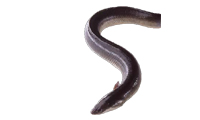From acid to eels
A chemical plant in southern Sweden is cutting down on waste by using recovered heat and water to produce a slippery delicacy.
DATE 2023-11-28 AUTHOR Jack Jackson The Kemira chemical plant in Helsingborg, Sweden, uses some of the 22 MW of heat it recovers from sulphuric acid production to start up a side business not usually connected to chemical factories: an eel farm. The Kemira chemical company founded Scandinavian Silver Eel (SSE) in the mid-1980s to exploit the brackish cooling water in the sulphuric acid plants. It began as just a “wild idea”, says Sara J?nsson, plant manager, Pulp Chemicals Production, Kemira Kemi AB.
The Kemira chemical plant in Helsingborg, Sweden, uses some of the 22 MW of heat it recovers from sulphuric acid production to start up a side business not usually connected to chemical factories: an eel farm. The Kemira chemical company founded Scandinavian Silver Eel (SSE) in the mid-1980s to exploit the brackish cooling water in the sulphuric acid plants. It began as just a “wild idea”, says Sara J?nsson, plant manager, Pulp Chemicals Production, Kemira Kemi AB.
“It started as a project on what Kemira could do with the warm salt water that was just pumped back into the sea,” J?nsson says. “At the time, heat recovery was not as prevalent, and some heat was just cooled with salt water and pumped back to the ocean. Someone who had knowledge about eels came up with the idea to farm eels with this warm salt water.”
Kemira redesigned its plant in the mid-1980s, installing Alfa Laval plate heat exchangers in a closed-loop cooling circuit. With this heat recovery system, the heat from the acid production transfers to a closed-loop circuit. Most of the heat in this circuit warms up district heating water through plate heat exchangers for the city of Helsingborg. The remainder is used on site in an internal heating loop, and this also warms the closed recirculating system of the eel farm, J?nsson says.
An important part of SSE’s business is to help maintain the eel population around the Baltic Sea. “Scandinavian Silver Eel has been involved in the restocking of small eels since 1984, and with others we have achieved significant numbers of mature [silver] restocked eels leaving the Baltic,” says the company’s Richard Fordham.
Baby “glass” eels are imported from England’s River Severn, where the stable eel population and environmental factors make it tough for a large proportion of the baby eels to survive. Since they are too weak to search for a new habitat and would otherwise die, some of the excess glass eels are sent to restocking programmes such as that at SSE, Fordham says.
The eels spend nine weeks in quarantine after they arrive to check that they are not carrying a disease. Two-thirds of them are then sent onwards to restocking programmes in rivers and lakes in Sweden, as well as in Finland, Germany, Poland and Hungary. The remainder grow on the farm for about 18 months until they are ready to be sold for consumption – a Scandinavian delicacy.
Since 1984 SSE has released more than 23 million small eels into the wild in Sweden.
Strong enough for sulphur
The Boliden Harjavalta and Kemira sulphuric acid plants (see main stories) both recover waste heat with semiwelded Alfa Laval plate heat exchangers.
“It was the introduction of D205 material in the plate heat exchangers that made this possible,” says Magnus Renlund, segment manager, Process Industry and Power, Alfa Laval Nordic. Two of the most important components of D205 material are nickel alloy and its silica content.
“When you’re dealing with sulphuric acid, you need certain plate materials that can withstand strong, concentrated,
sulphuric acid.”
In such plants, plate heat exchangers make it possible to economically recover the heat from the circulating acid in the drying and absorption towers. By installing a closed loop of cooling water, the heat can be used for a range of purposes, such as district heating, boiler feed water preheating, process heating in adjacent plants, space heating of factories and offices, production of freshwater by desalination, and the enabling of more internal electricity generation from waste steam, Renlund says.
How much a plant saves on its own energy costs through this process depends upon many factors, including technology supplier, other investments in energy efficiency and climate around the plant, he adds.
The payback time for plate heat exchanger installation depends on the specific application, Renlund says. “Payback time is usually from half a year to three years,” he says. “But on average, if we estimate from what we hear from our customers, it might be less than one year for the investment. And anyway, recovering energy goes in line with reducing CO2 emissions. This is energy that can and should be used.”